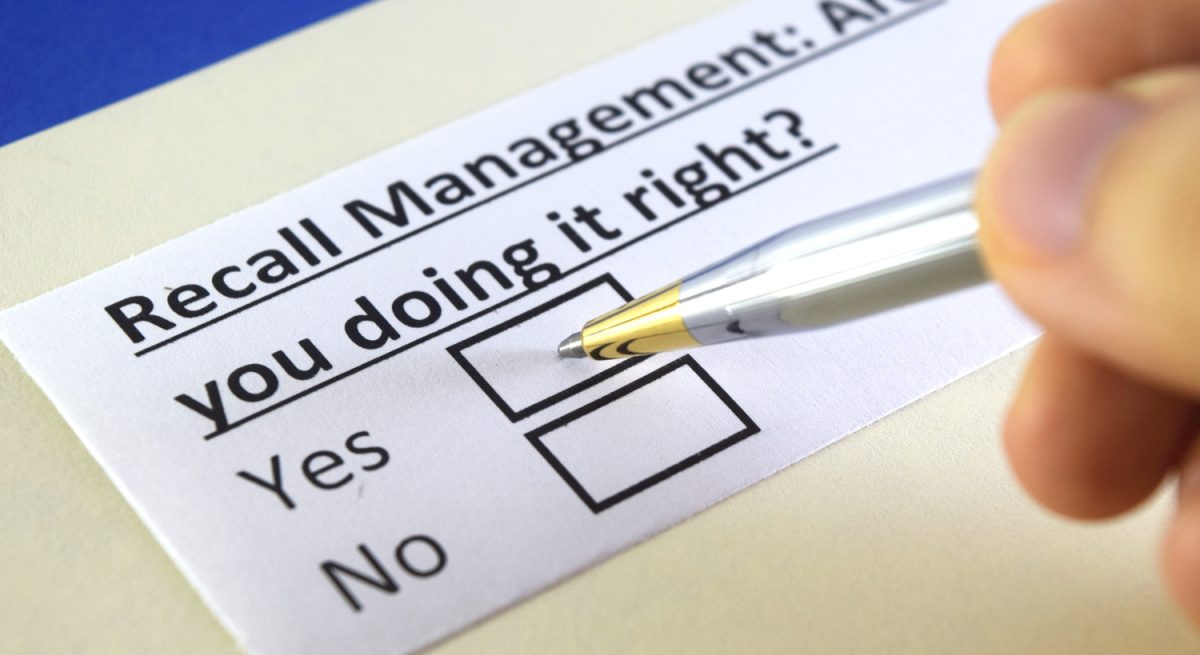Modernize Your Recall Management Plan with Digital and Automated Strategies
4 Min Read By Jim Hardeman
We’re in an unusual time when troubled supply chains are suddenly top of mind for the average American: supply chain woes have become fodder for late-night television hosts, and countless headlines warn us that we should’ve started our holiday shopping yesterday. Discussion of supply chain complexities seems to have become as common as chatting about the weather.
Of course, the importance of healthy, functioning supply chains isn’t news to those in restaurant management – they are the lifeblood of the restaurant and food service industries.
Global and domestic supply chains are more complex and interdependent than ever, and while they offer consumer benefits like more choices, lower prices, and the year-round availability of many food items that were once only seasonal, the increasing number of moving pieces also adds more risk for product quality and food safety failures.
Increasing Risk of Food Recalls Highlights Need for Planning
Product recalls, market withdrawals, and safety alerts are becoming more common, with over 1700 tracked by the FDA to date this year. It seems that every week brings the announcement of another recall while families across the country scramble to throw out their onions, lettuce, beef – whatever the latest announcement brings – and restaurants, too, launch into crisis control mode.
In 2018, there were a combined 656 FDA and USDA recalls, and there has been an 83 percent increase in Class 1 recalls of meat and poultry alone since 2013. These types of recalls directly impact customer satisfaction, and the average cost to a food company is $10 million dollars each time.
An effective recall strategy is imperative for protecting your customers’ health and your brand’s reputation. If you’re unprepared for a withdrawal or recall, you’re not only jeopardizing your customers’ well-being and your brand reputation, but you’re also setting yourself up to face significant economic and social consequences. The best way to mitigate that risk is knowing how to perform recalls effectively through quick action and effective communication – it keeps customers safe, retains brand trust, and protects your restaurant’s bottom line.
New Digital and Automated Strategies Can Help
Creating an effective recall management plan is no small undertaking, and the process can feel daunting. The goal is to create a plan that quickly identifies impacted products, know where those products are in the supply chain, and know who to contact so that they can remove them. Your plan is generally going to involve steps, starting with an investigation to understand the full scope of the incident. Other initial actions may include “product holds” to keep any potentially unsafe food out of reach while further investigation occurs; notifying and alerting distributors and locations to remove product; and in some cases, informing the press and the public. Finally, your plan will include root cause analysis, corrective action, and credit or replacement product for your retail locations.
There are many more steps and best practices in between, making the entire process overwhelming for even smaller restaurant brands. Fortunately, there are new digital and automated strategies emerging that can help streamline product recalls and accelerate notifications to customers and supply chain partners. Here are a few of them:
- Automated trend and issue detection: Quality incident management software can help you monitor product complaints in real-time and automatically notify your quality assurance team and category managers of elevated trends, allowing you to quickly start an investigation or take further action with a product hold, withdrawal, or recall.
- Traceability and automated product recall software: New software tools can offer a comprehensive, automated approach to the entire food and product recall process. Some are even capable of item-level traceability, which meets the proposed rule 204 of the FDA’s Food Safety Modernization Act (FSMA) and enables fail-proof quality control through the systematic review of origin, destination and freshness of ingredients as they move through each stage of the supply chain. This review can span all supply chain partners, end to end, providing full transparency into what went wrong and when and where it occurred. Item-level traceability also results in less food waste, as affected products can be identified with pinpoint accuracy.
- Automated communication and data entry: Product withdrawals and recalls leave no time for manual communication and data entry. Automated systems can notify impacted parties and stakeholders simultaneously through multiple channels, as well as provide product identification, photos, and instructions for quick identification and recovery.
- Automated response tracking and reporting: Once notifications have been sent out, you have to get responses from each party and know how much product has been recovered. E-mails, phone calls, and manual tallying are inefficient, but responses and reporting can be automatically tracked to measure the completeness of your actions in real-time, creating transparency and the ability to know exactly where the process stands at all times.
- Automated record-keeping: It can be challenging to keep everything well-documented in the midst of a crisis, but automated record-keeping built into product recall software can maintain detailed timelines of actions, along with the ability to include internal notes, attachments, risk evaluations, recall strategy, and related incidents. This can help your recall team stay focused and ease your communication with both company ownership and the Food and Drug Administration.
- Automated mock recalls: It’s wise to run through mock food and product recalls regularly, and automated systems can help simplify this process. Doing so can help poke holes in your process and highlight weak spots. Identifying deficiencies can help you improve your approach when the real thing happens.
Food and product recalls are a part of life in the restaurant world, and a necessary part of a system of food safety checks and balances that help keep your customers safe. Ultimately, you want to be prepared before a food or product recall happens and prior to any impact on your restaurants. Being proactive and having a plan will go a long way toward that and harnessing new digital and automated strategies can help you modernize your plan, allowing you to protect consumers and protect your restaurants to retain public trust.


